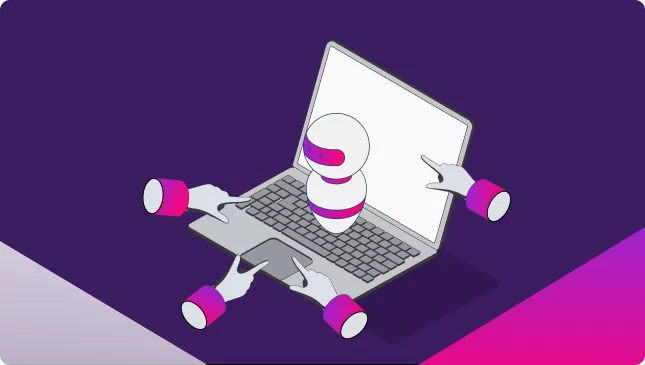Understanding Bot Farms: Their Purpose and Functionality Demystified

The growing need to boost online traffic has spurred the development of bots. These infamous software agents have enabled websites to artificially inflate their traffic numbers through the generation of fake bot traffic. Consequently, there has been a surge in the demand for bot farms. Through our exploration, we have observed a noticeable increase in the prevalence of bot farms.
But what exactly are bot farms, and what purposes do they serve? How do they affect real users and businesses? Let’s delve into these questions to uncover the answers.
Jump To...
What is meant by bot farms?

Starting with the basics, it’s important to understand that a bot, short for robot, is a software application designed to mimic human actions. When multiple bots are combined, they form what is known as a bot farm. Our testing has shown that creating a bot farm requires a solid understanding of JavaScript coding.
In our observations, bots are not typically centralized in a single bot farm or location. Instead, they are often linked to a controlling machine learning device, which automates repetitive tasks that would otherwise require human intervention. Setting up a fully functional bot farm requires minimal investment and labor, making it an appealing option for earning extra income.
Recently, bot farms and other bots have evolved into sophisticated tools for generating fake traffic and clicks, blurring the lines between real human behavior and bot activity. As the demand for bot farms and similar bots continues to rise, so does the number of bot farms in operation.
Distinction Between Click Farm and Bot Farm

The term “click farms” often necessitates clarification regarding the relationship between clicks and these establishments. Essentially, a click farm serves as a gathering place where individuals interact with websites, generating “clicks” to bolster the visibility of a client’s product, service, or website.
Typically, website owners hire individuals to perform these tasks remotely, either through PTC (paid-to-click) sites or by utilizing bot farm accounts to simulate human behavior. However, these activities often occur discreetly, behind closed doors, rendering them fraudulent in nature.
It’s essential to note that bot farms and click farms are not distinct entities. Rather, bot farms represent a type of click farm, as both engage in the generation of fake clicks, leading to instances of ad fraud and click fraud.
Activities Carried Out by Bot Farms

The primary objective of utilizing bot farms is to generate profits. Business owners earn money each time a bot farm successfully completes a task. Some common methods that people use bot farms to generate profits include:
Twitching YouTube views
Certainly, the revenue generated by a YouTuber directly correlates with the number of views their channel receives. Businesses are keen to collaborate with influencers who have a large audience reach. Bot farms, also referred to as view bots, enable individuals to manipulate view counts, thereby inflating their overall profits.
Traffic on website
A reliable VPS server is essential for managing the daily traffic on a website. However, attracting sufficient traffic is equally crucial for enhancing the online visibility of the website. As it’s not always feasible to attract real-world users’ traffic, a bot farm serves as a viable alternative. Bots assist in boosting site traffic by manipulating the number of clicks.
Creating fraudulent PPC clicks
Our research has revealed that marketers can profit from ad fraud when someone clicks on their Google ads or PPC (pay-per-click) ads. Bot farms facilitate the creation of fraudulent clicks, instantly boosting the success of PPC campaigns or Google search results.
Manipulation over social media platforms
Social media bot accounts, with their large number of followers and instant likes, create the illusion of credibility and popularity for the user and profile images. Bot farms manipulate likes, comments, and follows, enabling advertisers to bolster their business by projecting an image of widespread engagement and popularity.
Detriments Induced by Bot Farms
Today, approximately half of global internet traffic is generated through bot farms. While this may yield short-term profitability for bot farm website owners and businesses employing manipulation tactics to promote their services and products, the long-term impacts of bot farms are predominantly negative.
Generates Site Strain
As website traffic increases, website owners must manage a higher volume of requests. If these requests are left unattended, the increased traffic becomes futile. In a layer 7 DDoS attack, the assailant inundates the target website with malware code, further exacerbating the situation.
To disrupt the normal flow of traffic, attackers utilize multiple IP addresses when targeting a website. Consequently, web servers such as VPS servers are also adversely affected by these malicious invasions.
Challenges in Data Analysis
Analyzing previous data to formulate a successful plan is crucial. However, when the majority of traffic originates from bot farms, devising an effective strategy becomes challenging.
Absence of Conversions
Fake clicks ultimately result in zero sales. Despite having a website filled with empty images, Google ads, and high traffic generated by a bot farm, the conversion rate remains stagnant due to severe click fraud and the absence of genuine human interaction.
Crackdown on Well-Known Ukraine Bot Farm

The surge in bot farming traffic has prompted several government entities to implement anti-bot measures. One notable crackdown on bot farms occurred in war-torn Ukraine.
Based on our practical knowledge, around March 2022, the Ukrainian government successfully dismantled approximately five bot farms and associated websites responsible for disseminating misinformation and inducing panic. This covert operation was conducted by the computer security service in Kyiv, the capital city.
It was estimated that there were approximately 1 million bots operating under this network. Reports suggest that the security service of Russia was behind the operation of this bot farm. This crackdown shed light on the extensive reach and impact of bot farm networks.
Frequently Asked Questions
Indeed, a bot farm is a type of click farm, but it operates with minimal human intervention. Within a bot farm, numerous bots work collectively, often situated across different locations. These bots can execute tasks efficiently with the guidance and input from a controlling machine learning device.
You’ve provided a comprehensive overview of how bot farms can generate income through various means:
Social media engagement: Bot farms create fake accounts to interact with social media content, such as liking, commenting, sharing posts, and following accounts. They then sell this engagement to businesses or individuals aiming to boost their social media presence.
Advertising clicks: Bots are programmed to click on ads on websites, earning revenue for bot farm owners through pay-per-click advertising models.
Spamming: Bots are utilized to send out spam messages, emails, or comments to users, either to promote products or spread malware. Bot farms may charge fees to clients for sending out these spam messages.
Data harvesting: Bots collect data from websites, including email addresses, phone numbers, or personal information, which can be sold to companies or individuals for marketing purposes.
Account creation: Some bot farms specialize in creating large numbers of fake accounts on social media or other platforms, which can be sold to businesses or individuals looking to inflate their online following or customer base.
It’s important to note that many of these activities are illegal or violate platform terms of service. Bot farms can also be exploited for more malicious purposes, such as disseminating disinformation or conducting cyberattacks.
In some cases, bot farms may originate at the base of warehouses, and even if they are shut down or dismantled, there’s a possibility that they may respawn or reemerge.
Social media platforms such as Facebook, Instagram, and LinkedIn have strict policies against bot accounts and bot activity. They actively monitor and detect automated or non-human behavior on their platforms and may suspend or terminate accounts found to be in violation of their terms of service. In some countries, engaging in bot activity on social media platforms is considered illegal and constitutes fraud.
Developing an individual bot is permissible and within legal bounds, whereas operating a bot farm is not. Bot farms elevate the risk of virus dissemination. On occasion, bot farms can instigate panic, precipitating alarming circumstances.
Bot, an abbreviated term for robot, is a software application that is programmed to carry out particular tasks that would typically necessitate human intervention. Its primary significance lies in alleviating the burden associated with performing tedious work.
While determining if you’ve landed on a website infested with a bot farm can be challenging, it’s not entirely insurmountable. Here is an illustration along with some references to key indicators that can aid in identification:
Instances of users abandoning their shopping carts at an unusually elevated rate
An abnormal surge in the volume of spam activity
A discrepancy between a high click rate and a low conversion rate
Unexplained sources of traffic
Bots can be developed using a diverse range of programming languages and tools, the selection of which depends on the specific purpose and platform for which the bot is intended.
Conclusion
As demonstrated by our tests, nearly half of internet traffic is attributed to bot or automated non-human activity. Determining the legitimacy of various bot traffic or accounts in a game or platform is crucial. Recognizing authentic human behavior towards a product, game, or service becomes essential in this context.
Addressing concerns about anti-bot measures is a significant challenge for marketers. Bots, beyond being utilized for malware dissemination, serve as web crawlers for indexing and gathering crucial information. Confronting these small scripts directly may not be practical. Instead, employing a bot farm strategically can be a way to maximize benefits.




